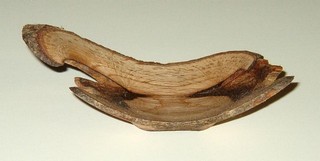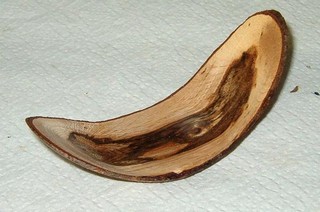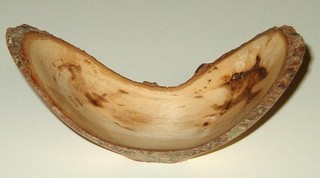
I was not really sure what to call these figures. They are not really winged or natural edged bowls because there is not enough "bowl" in the center. The reason for turning is to turn the wing shape and "angel wing" sells better for me than just "wing." This would be considered an intermediate project, I think, but if you have turned a bowl that is really all this is, a bowl with a lot of air instead of wood in the sides.
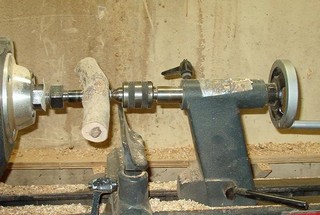
Here I have mounted a very dry piece of oak, about 6" long and 2 1/2" diameter, between centers on my Craftsman lathe. It is roughly perpendicular to the lathe bed and close to centered on the diameter of the log.
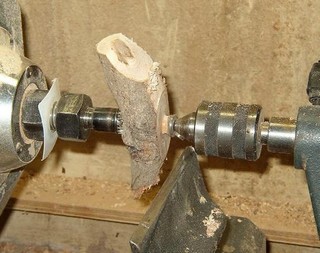
Turning at about 1200 rpm, the shape is roughed and the bottom flattened to receive a glue block. I do not bother to remove any of the inside at this time. It is quickly evident that the wood seems to disappear with the speed of the lathe, similar to the seeming disappearance of bicycle spokes as the tires turn. Part of the fun of this turning is the working with wood that is not there to see, but certainly to feel.
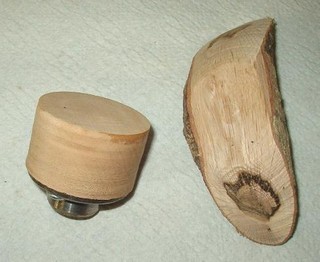
While the glue gun heats the nub at the bottom of the piece is chiseled off and the glue block prepared on a face plate.
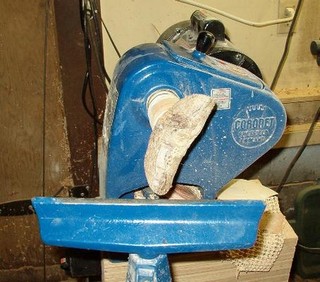
With the glue block mounted and the piece returned to the lathe, it is ready to continue. Here I have placed it on my Record bowl lathe because I like to work with face plate shapes on it. I could have mounted it to the Craftsman. A bowl lathe is not necessary, just nice. Also, it is a bit easier to take the pictures. This lathe has three speeds chosen by moving a belt. I will both turn and sand this piece at 1200 rpm. The only tool used is a 1/4" Oland tool and a parting tool to remove the piece from the glue block.
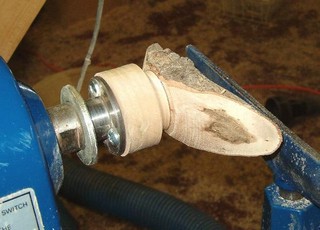
The outside is turned and ready for sanding. Turning is done the same way as turning a bowl, except that the wood can not be seen out on the wings. It can be a bit unnerving at first but after few regular bowls you find that your hands know what to do.Trust them, go for it, and keep your hands behind the tool rest.
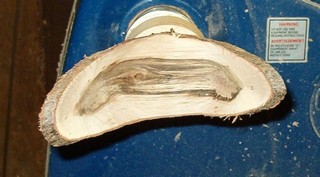
The inside is turned and ready to sand. Similarly to turning a natural edged bowl with thin walls, it may be good to turn to thickness an inch at a time to maintain support near the center. I power sand with the lathe off, working my way up to 2000 grit. It may be a bit excessive given the porous nature of the oak, but it only takes a minute or two for each grit after 120, and I like the look.
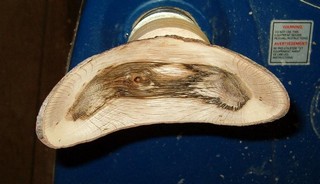
The piece is sanded and ready for a coat of tung oil before parting off the lathe. To remove a piece from a hot glue block, just part in with a standard parting tool to about an inch or a bit less in diameter, stop the lathe, and gently pry the piece away. The friction of the parting cut will soften the hot glue just enough to release it.









